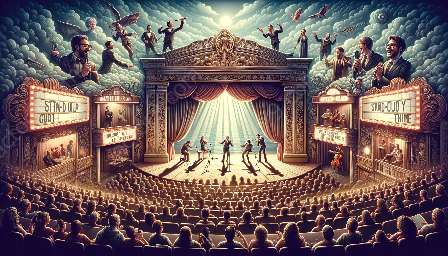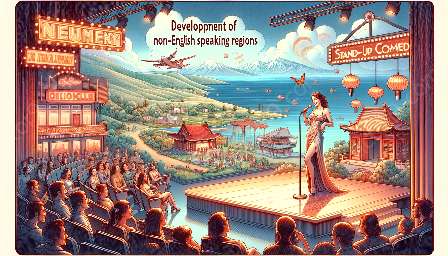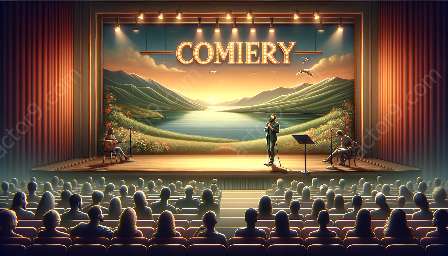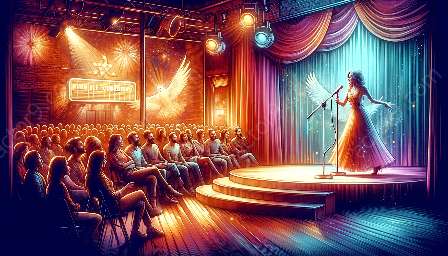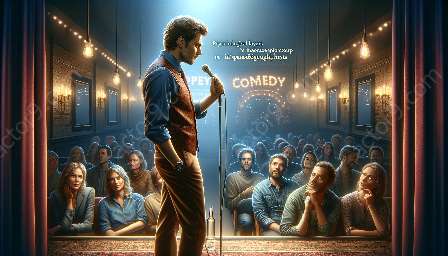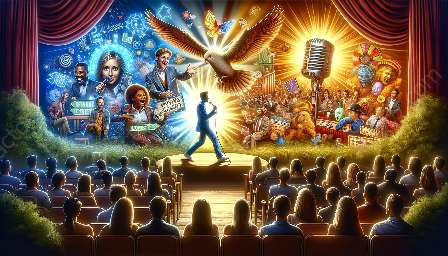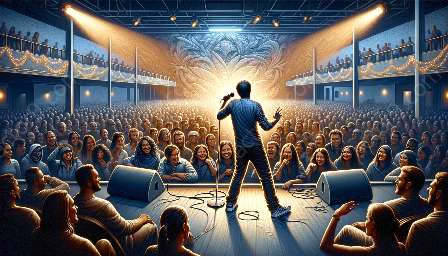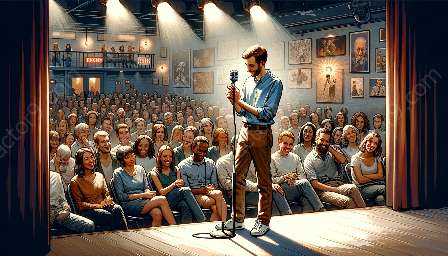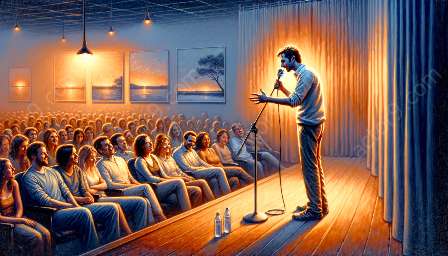Humor is an essential component in both theater and stand-up comedy, yet the way it is utilized and presented in these two forms of entertainment differs significantly. In this article, we will delve into the similarities and differences in the use of humor in theater and stand-up comedy, and explore how humor contributes to the art of storytelling and stand-up comedy.
The Role of Humor in Theater
In theater, humor is often used as a tool to engage and entertain the audience while conveying deeper meanings and emotions. It can be found in various forms, such as witty dialogue, physical comedy, and situational humor. Humor in theater serves not only as a source of entertainment but also as a way to highlight important social or political issues, provide commentary on human behavior, and create memorable moments that resonate with the audience.
The Use of Humor in Stand-Up Comedy
Stand-up comedy, on the other hand, relies heavily on humor as the central element of its performance. Comedians use humor to connect with the audience, share personal experiences, and present their unique perspectives on different aspects of life. They often use observational humor, self-deprecation, and storytelling to elicit laughter and create a rapport with the audience.
Similarities in the Use of Humor
Despite the differences in presentation and context, there are several similarities in the use of humor in theater and stand-up comedy. Both forms leverage humor to engage the audience, provoke thought, and evoke emotional responses. Both theater and stand-up comedy are grounded in storytelling, and humor serves as a vehicle to drive the narrative and captivate the audience's attention.
Differences in the Use of Humor
One notable difference lies in the delivery and timing of humor. In theater, humor may be integrated into the broader narrative and may serve as a supporting element rather than being the primary focus. On the other hand, stand-up comedy places humor at the forefront, with comedians relying on well-crafted punchlines and comedic timing to keep the audience entertained throughout their performance.
The Context of Humor
Furthermore, the context in which humor is presented differs between theater and stand-up comedy. In theater, humor is often intertwined with the overarching themes and characters of the play, while in stand-up comedy, humor is deeply personal and reflects the comedian's individual experiences, beliefs, and perspectives on the world.
Conclusion
In conclusion, while humor plays a vital role in both theater and stand-up comedy, the way it is used and presented varies significantly. Both forms of entertainment harness the power of humor to engage, entertain, and provoke thought, albeit in distinct ways. Understanding the similarities and differences in the use of humor in theater and stand-up comedy provides valuable insight into the art of storytelling and stand-up comedy as well as the diverse ways in which humor can be utilized to connect with audiences.


